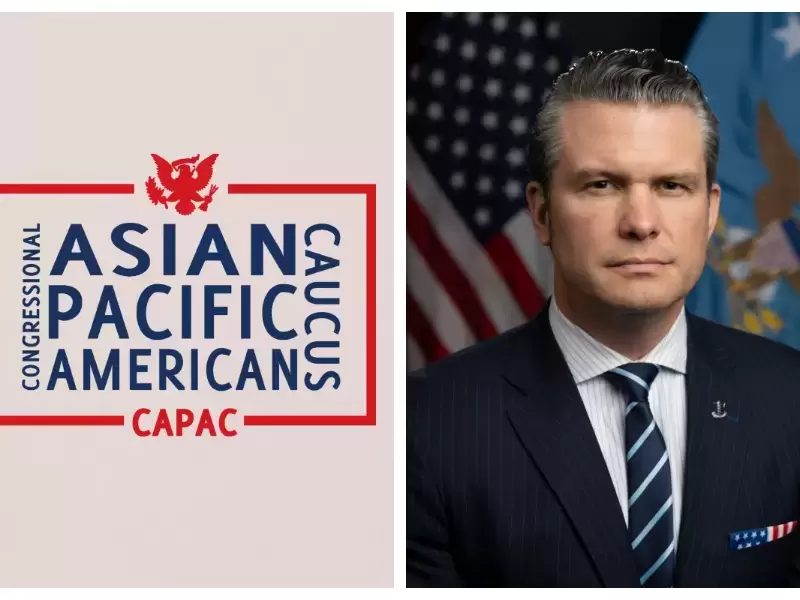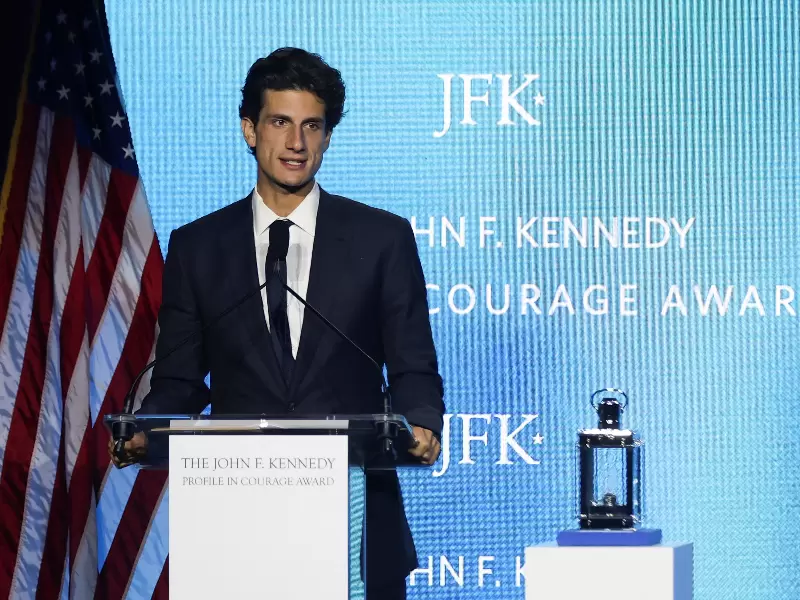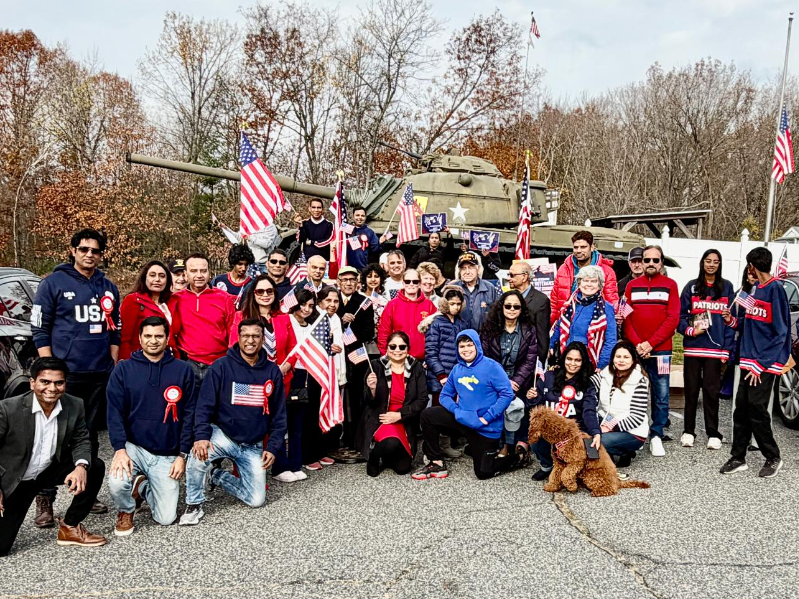New Jersey’s new majority: Why Sherrill–Caldwell won and what it means
Their campaign treated AAPI and Hispanic voters as partners, not props.
 Mikie Sherrill and and Lt. Gov.-elect Dale Caldwell. / Facebook
Mikie Sherrill and and Lt. Gov.-elect Dale Caldwell. / Facebook
Mikie Sherrill didn’t just win New Jersey—she and Lt. Gov.-elect Dale Caldwell rebuilt the state’s governing coalition from the sidewalk up. Their formula was simple, old-school, and deeply modern: show up, listen, and solve concrete problems for immigrant, working-class, and suburban families who live with Washington’s turbulence every day. That approach beat a culture-war script and a reflexive “A rating for Trump” — because in New Jersey, national choices are local consequences.
What did they do differently? First, relationships over photo ops. Their campaign treated AAPI and Hispanic voters as partners, not props — walking Oak Tree Road and BAPS campuses, turning Diwali, Navaratri, bodegas, and diners into policy listening posts about affordability, education, bias, and small-business survival. That’s how Sherrill and Caldwell captured broad support in immigrant-rich corridors and why turnout and margins surged in places long ignored by statewide campaigns. The result was not a one-night coalition but an emerging civic center of gravity.
Second, they named the pocketbook culprits. Tariff shocks function like a stealth tax in an import-heavy state: higher costs on containers ripple to the register for tech, groceries, and festive-season retail. Independent analyses have already tied 2025 tariff moves to measurable price increases; industry studies project double-digit jumps for consumer tech alone. That’s not an abstraction on the main streets of New Jersey—it’s a thinner holiday margin and a family buying less. Sherrill and Caldwell said so plainly. Voters rewarded the honesty.
Third, they rejected fear and retribution as policy. Highly publicized ICE raids don’t just terrorize the undocumented; they chill entire neighborhoods — PTA participation, clinic visits, even kids’ sleep. Research across disciplines links enforcement theatrics to anxiety, depression, worse birth outcomes, and setbacks in school for Latino children. New Jersey families felt that — and they backed the ticket that prioritized safety with trust and community partnership over spectacle.
Finally, they ran against chaos governance. The Trump-era shutdown — now the longest in U.S. history — delayed SNAP for millions, drained paychecks, snarled travel, and dragged on local economies. In a logistics and defense state, that’s not noise; it’s the weekly budget. You cannot claim to “put New Jersey first” while praising the architect of a shutdown that literally pulled food aid from New Jersey households. Voters noticed — and chose stability.
This New Jersey story is the national story, too. In New York City, Zohran Mamdani’s mayoral win — first Muslim, first South Asian, youngest in a century — rode the same current: a ground game that fused affordability with dignity, and a multiethnic coalition tired of performative politics. His campaign showed that speaking directly to rent, wages, and transit — without trimming identity — can scale to the nation’s largest city. The symbolic breakthrough is huge; the method matters more.
In Virginia, Abigail Spanberger just became the commonwealth’s first woman governor by keeping the focus on cost of living, infrastructure, and competent governance — paring back the drama while drawing a clean line on Trump-era policies. In a swing-state laboratory, voters again chose steadiness over spectacle.
Even ballot measures are echoing the shift. California’s Proposition 50 — pitched as a counter to partisan gerrymanders elsewhere — passed handily and is expected to tilt several House seats, part of a broader voter push to reduce Washington’s chaos premium. The “yes” coalition was explicit: treat redistricting as a firewall against national dysfunction. That message landed.
Back in New Jersey, the demographic through line is unmistakable. Latino voters — whiplashed by tariffs at the checkout, ICE at the workplace, and a shutdown at the pantry — swung back toward Democrats in 2025, reinforcing the Sherrill–Caldwell map from Hudson to Atlantic. The pattern mirrors the Mamdani and Spanberger coalitions: multiethnic, pragmatic, allergic to chaos.
Critics will argue that all politics is local. True — and in 2025, “local” is braided to global supply chains, federal benefits, and national temperament. Tariffs raise prices in Edison. ICE raids traumatize classrooms in Elizabeth. A federal shutdown freezes paychecks in Atlantic County and delays the Gateway Tunnel riders depend on. In each case, the Sherrill–Caldwell ticket offered the opposite of whim: predictability, proximity, and a willingness to let what they heard on a shop floor change what they did at the State House.
The lesson for both parties heading into 2026 is crisp:
- End the tariff whiplash that taxes families and strangles small importers. Use targeted trade tools, not across-the-board shocks.
- Replace immigration theater with trust-first safety: keep families together, invest in community policing, protect school and clinic access.
- Never again treat SNAP, paychecks, and air travel as bargaining chips. Voters now equate shutdowns with incompetence — and vote accordingly.
New Jersey rewarded the politics of continuity with community. New York City and Virginia did, too. California’s Prop 50 shows voters will also re-engineer the rules when national turbulence threatens representation. That’s the real 2025 story: a rising, issues-driven, multiethnic electorate — Indian American, Asian American, Hispanic, Black, and White — who rejected the politics of fear and chaos and elected candidates who care about affordability and are willing to fight for it.
Dr. Suresh U Kumar is an author, serial entrepreneur, professor, and member of the NJ-India Commission.
(The views and opinions expressed in this article are those of the author and do not necessarily reflect the official policy or position of New India Abroad.)
ADVERTISEMENT
ADVERTISEMENT
E Paper
Video



1759173958.png) Suresh U. Kumar
Suresh U. Kumar











Comments
Start the conversation
Become a member of New India Abroad to start commenting.
Sign Up Now
Already have an account? Login